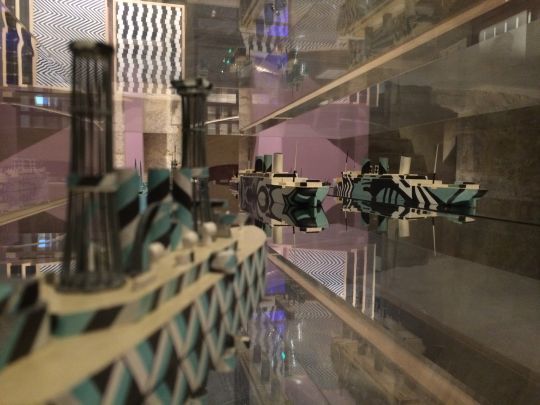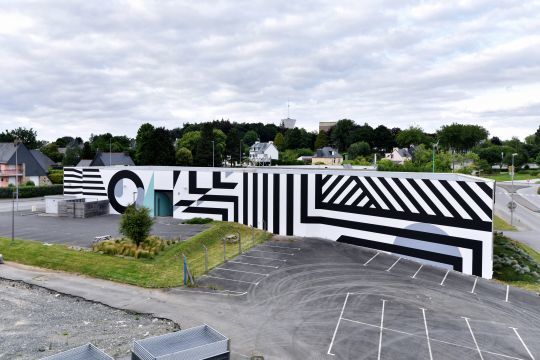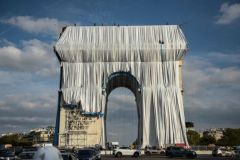In 2017 in Brest, around the commemorations of the American landings a century earlier, the exhibition "Razzle Dazzle, art against the attack!" presented a subject as little known as it was surprising: the Dazzle Painting (dazzling, blinding, flashy) camouflage of ships during the First World War.
Based on the principle of optical illusions, Dazzle Painting aims to deceive enemy submarines by creating false perspective effects to make it difficult to calculate course and speed. This painting with abstract and geometric motifs inspired by cubism was created by mobilized artists.
The scenography of the exhibition presented at the Musée National de la Marine was created by Jean-Baptiste Moal (X) and Guillaume Duval (Y) of the XYZ collective. The museum has put together a hundred original works with the contemporary creations of the collective.
It is from an image found by chance in a book that the XYZ collective became interested in the technique of Dazzle Painting. "It seemed completely crazy, improbable" explains Jean-Baptiste Moal, founding member of the collective.

A disruptive camouflage, a non-lethal weapon
"Initially Anglo-Saxon, Dazzle Painting arrived in France with the American troops. The harbor of Brest was studded with dazzled boats. But the collective memory of Brest had not kept any trace of this technique
Dazzle camouflage is surprising in more ways than one. Non-lethal weapon, it is realized by figurative artists rather classic, but arrives in the history of art at the time of the historical avant-gardes.
The collective XYZ has taken the way of camouflage to feed its work. In particular, in 2018, he created a large mural on the Biocoop in Carhaix, Brittany.

Even today, three years after the end of the exhibition which welcomed more than 80,000 visitors, Dazzle Painting continues to inspire the artists of Brest.
Dazzle Painting is also still used on warships around the world as part of coastal defense.








